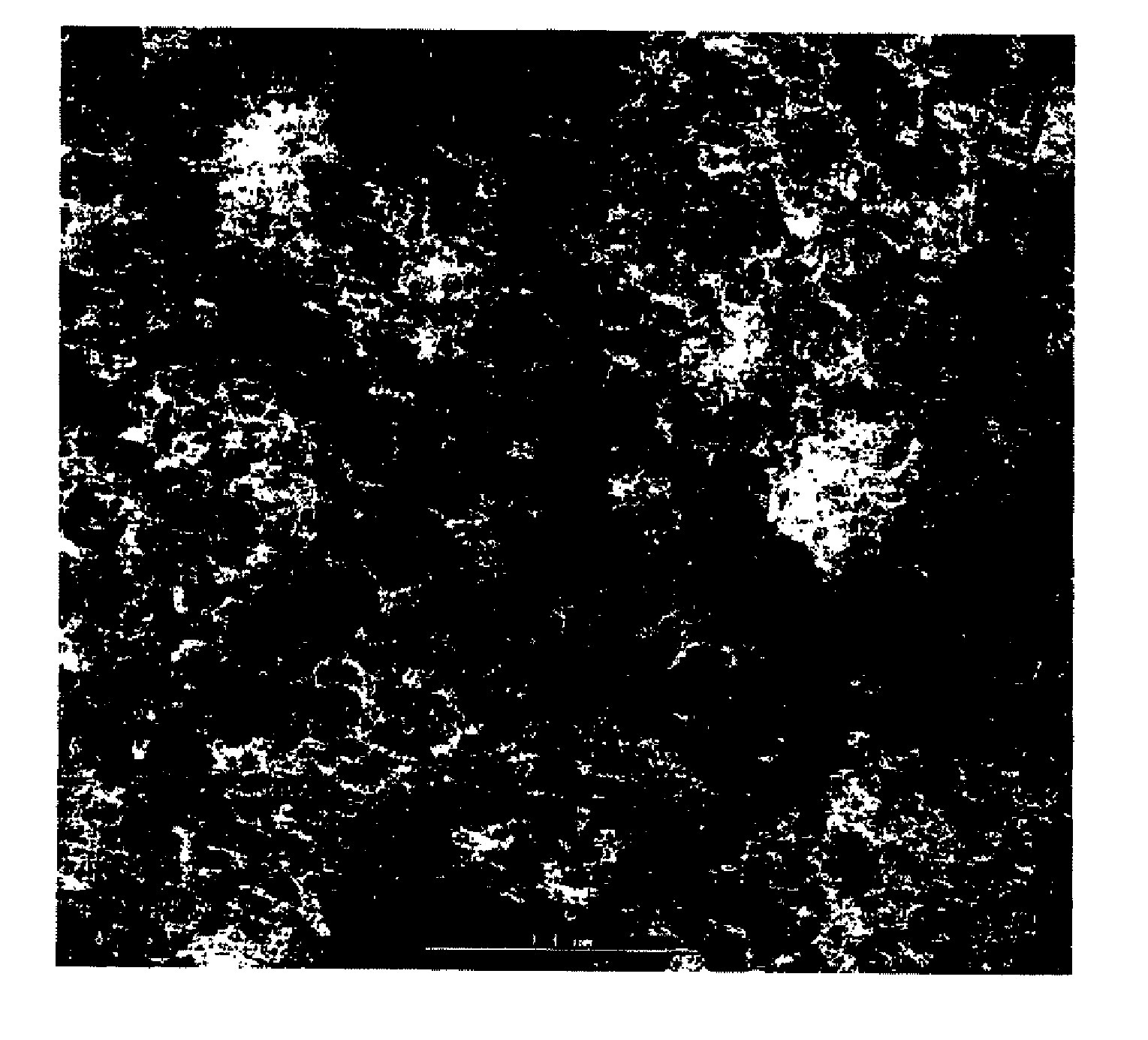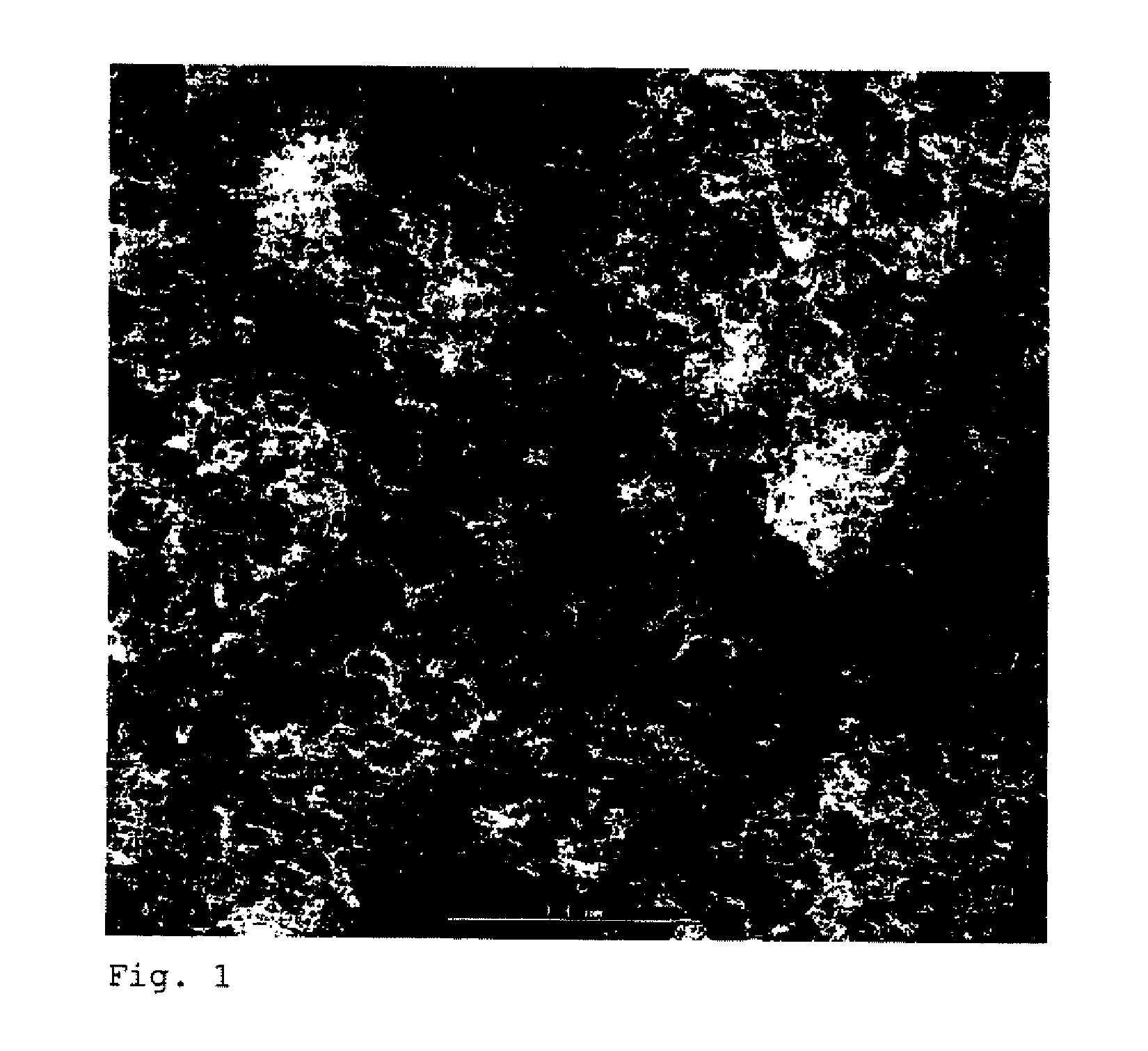Oxide compounds as a coating composition
a technology of oxide compounds and coating compositions, which is applied in the direction of transportation and packaging, nuclear engineering, railway signalling, etc., can solve the problems of difficult production of suitable oxide compounds having high homogeneity and purity, difficult production of suitable oxide compounds, and inability to produce thin coatings, etc., to reduce cracks, reduce temperature gradients, and improve thermal conductivity
- Summary
- Abstract
- Description
- Claims
- Application Information
AI Technical Summary
Benefits of technology
Problems solved by technology
Method used
Image
Examples
Embodiment Construction
[0083]The series of images in FIGS. 1 to 3 clearly shows the influence of the action of the laser depending on the duration of action, in this case given by the speed at which the laser was moved across the sample.
[0084]In detail, FIG. 1 shows an untreated Al / Al2O3 composite structure before the laser treatment. Neither a uniform surface nor a structuring of the surface can be discerned.
[0085]FIG. 2 shows an Al / Al2O3 composite structure after brief laser treatment. This gives rise to the formation of new morphologies and structures, in this case to nanowires and fractal structures.
[0086]FIG. 3 shows an Al / Al2O3 composite structure treated to complete conversion. Only a small number of defects can be discerned and the surface appears to be uniform.
[0087]FIG. 4 shows the broad absorption of the Al / Al2O3 composite structure (thickness: 200-400 nm). The absorption in a broad wavelength range permits the use of lasers in a broad wavelength range.
[0088]FIG. 5 and FIG. 6 show an X-ray diff...
PUM
| Property | Measurement | Unit |
|---|---|---|
| pressure | aaaaa | aaaaa |
| pressure | aaaaa | aaaaa |
| temperature | aaaaa | aaaaa |
Abstract
Description
Claims
Application Information
 Login to View More
Login to View More - R&D
- Intellectual Property
- Life Sciences
- Materials
- Tech Scout
- Unparalleled Data Quality
- Higher Quality Content
- 60% Fewer Hallucinations
Browse by: Latest US Patents, China's latest patents, Technical Efficacy Thesaurus, Application Domain, Technology Topic, Popular Technical Reports.
© 2025 PatSnap. All rights reserved.Legal|Privacy policy|Modern Slavery Act Transparency Statement|Sitemap|About US| Contact US: help@patsnap.com



